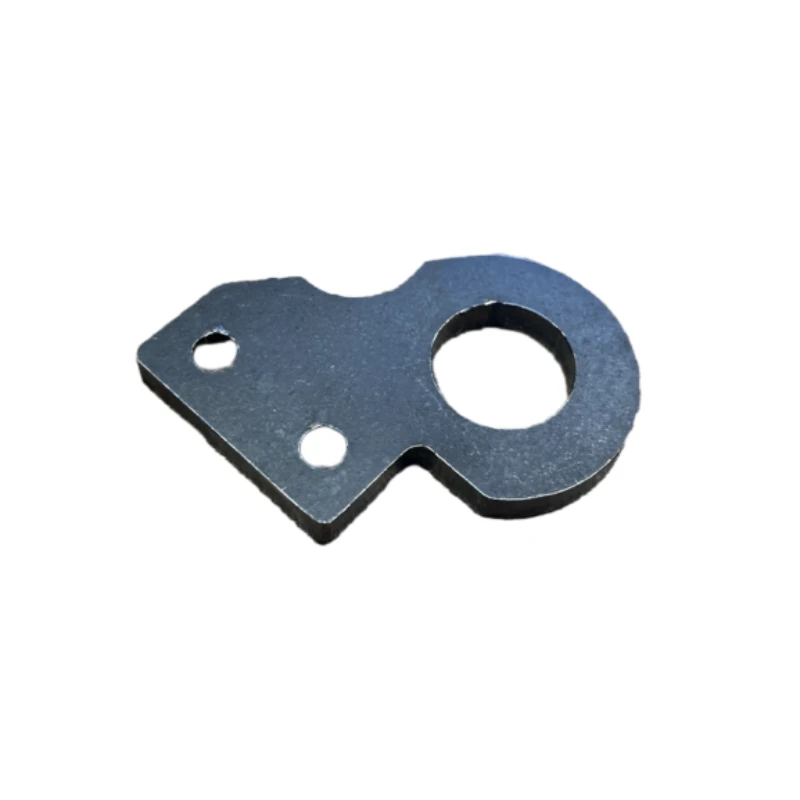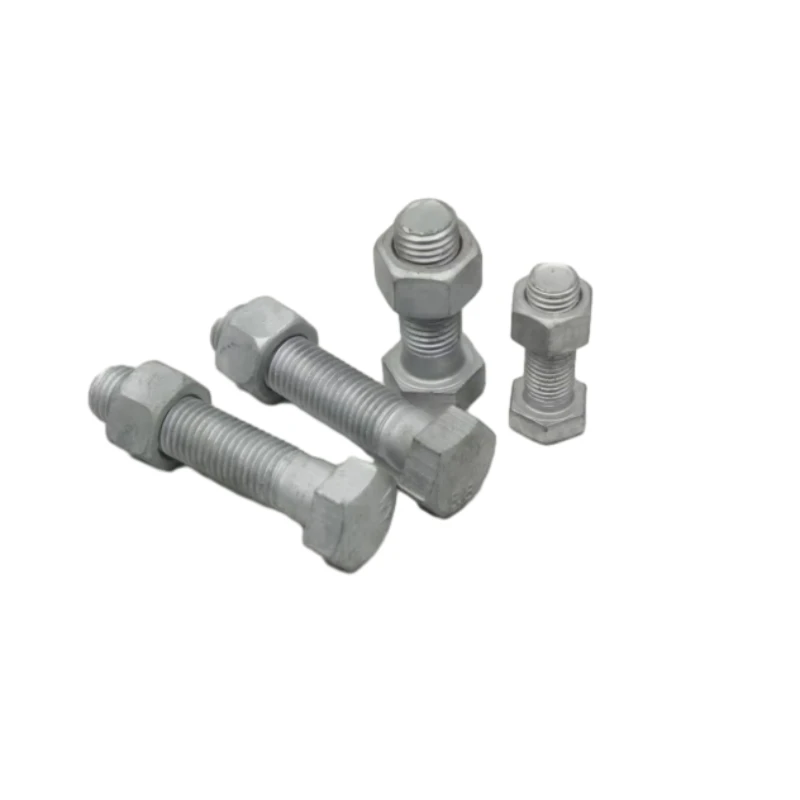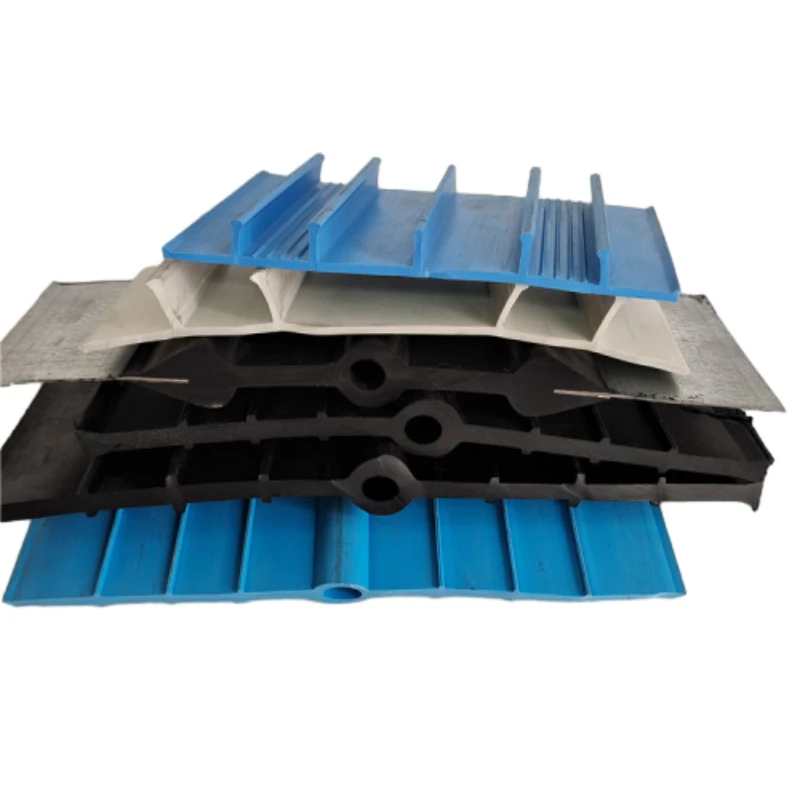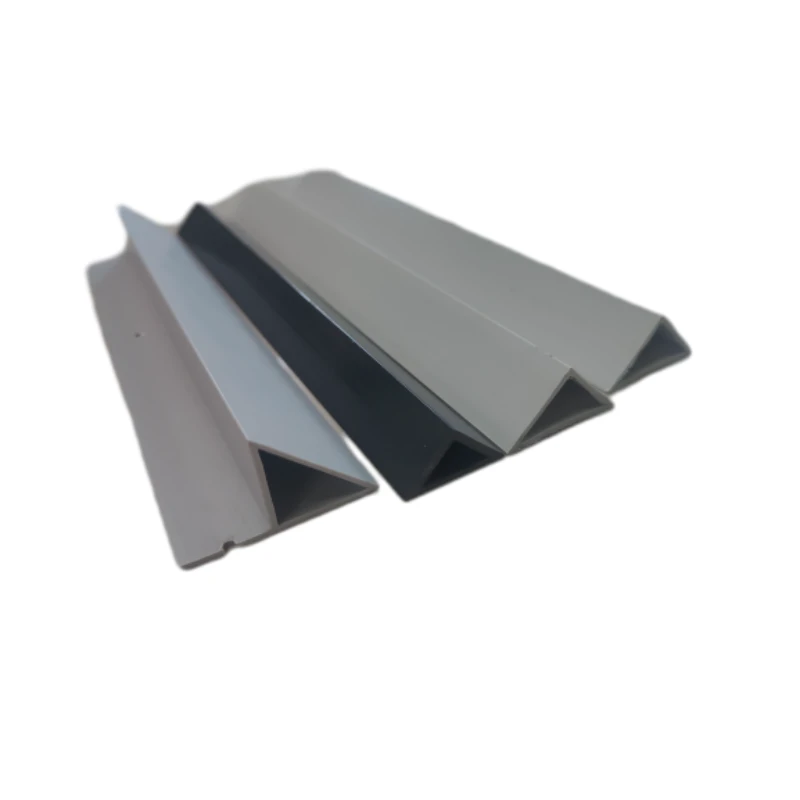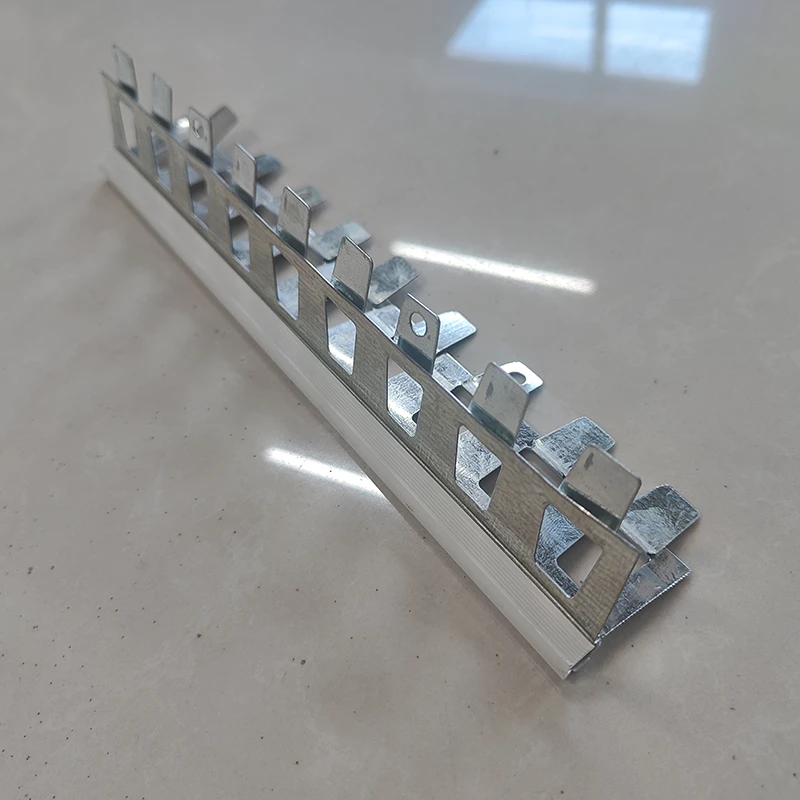Modern construction and engineering sectors rely on high-precision prop nut solutions, such as propeller nut, for scaffolding, formwork, and mechanical assemblies. Technology is accelerating, customer demands are rising, and industry standards (ISO/ANSI) are evolving — making it essential to understand trends, specs, and value drivers. This comprehensive report explores prop nut manufacturing, application scenarios, technical comparisons, customization, and real-world use cases. All data and content adhere to EEAT (Experience, Expertise, Authoritativeness, Trustworthiness) requirements and reference established industry resources.
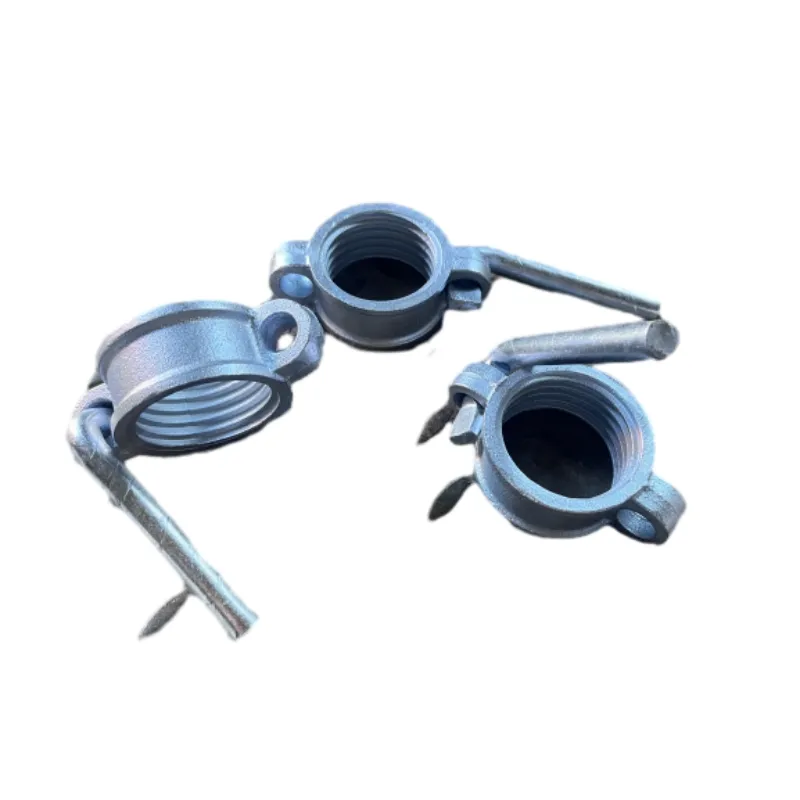
1. Industry Overview: Prop Nut, Propeller Nut, and Prop Nut with Handle — Market Trends and Outlook
Prop nuts are critical load-bearing connectors for adjustable scaffolding, shoring props, and heavy equipment. Increasing global infrastructure investments and safety regulations (e.g., , ISO 9001:2015) have sharply raised performance and durability requirements. Advanced variants—like prop nut with handle and propeller nut—improve ergonomics and efficiency, fueling market growth.
- 2023 global scaffolding prop nut market was valued at USD 1.2 billion (), with a 7.8% CAGR projected through 2028.
- Key drivers: Modular construction, stricter onsite safety, surge in energy/petrochemical projects.
- Europe & Asia-Pacific together held 72% share in premium prop nuts with ISO/ANSI-compliant manufacturing.
Prop Nut Technical Parameter Trends (2017-2024)
2. Core Product: Scaffolding Prop Nuts Introduction
Official Site: https://www.wrkformwork.com/scaffolding-prop-nuts.html
Material: High tensile ductile Iron (ASTM A536), SG Iron, or Forged Carbon Steel (Q235/Q345)
Finishing: Hot-dip galvanizing / Electro-galvanizing / Powder coating
Sizes: 48x3.0mm / 57x3.5mm / Custom sizes
Standards: Conforms to ISO 9001:2015, ANSI B18.2.2, and EN 1065
Typical Uses: Scaffolding shoring props, formwork support, large machinery base, petrochemical plants, mining, metallurgy, civil engineering works
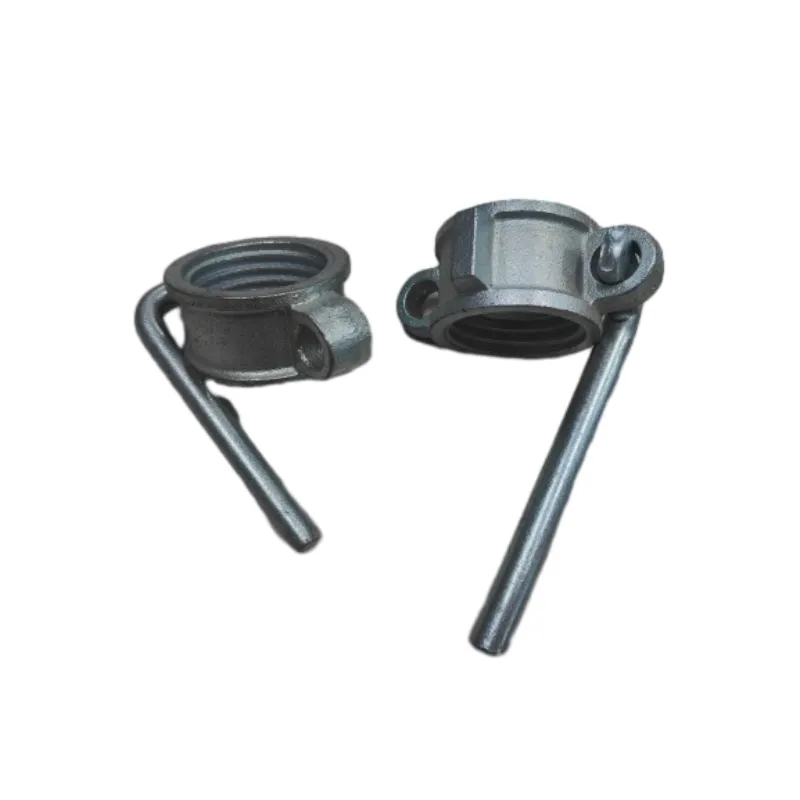
3. Prop Nut Manufacturing Process Flow
Manufacturing Flow with Key Technology Nodes
- Raw Material Inspection → Certified iron/steel is selected per ISO 898-6.
- Casting/Forging → High-pressure die casting or hot forged to shape for performance & grain refinement.
- Precision CNC/Thread Machining → Critical for thread concentricity, fit, and load rating control (CNC 5μm tolerance).
- Surface Treatment → Hot-dip galvanized or powder coated per ISO 1461; withstands 1000+hr salt spray test.
- Dimension & Strength Testing → 100% checked for mechanical and fail-safe behavior—per ASTM A370 or ISO 2320.
- Batch Coding & Traceability → Serial number and batch tracked for QA, warranty, and recalls.
- Packing & Shipping → Customized packaging for corrosion and transit protection.
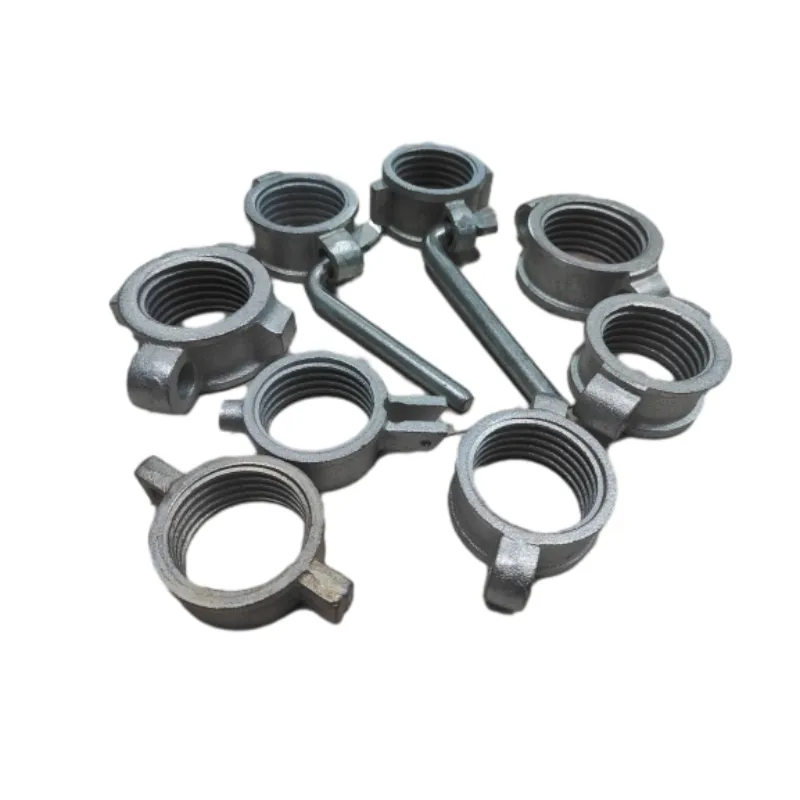
4. Key Technical Parameter Table — Prop Nut & Related Types
| Parameter | Standard Prop Nut | Prop Nut with Handle | Propeller Nut | Scaffolding Couplers |
|---|---|---|---|---|
| Material Grade | SG Iron / Q235 | Q345B Forged Steel | SG Iron/Alloy Steel | Q235 Mild Steel |
| Thread Type | Acme/Trapezoidal | Acme, Square | Round | Metric/BSW |
| Surface Finish | Galvanized | Powder Coated | Hot-dip Zinc | Electro-galv. |
| Ultimate Load (kN) | ≥90 | ≥110 | ≥100 | ≤50 |
| Avg. Working Life (Years) | 6–8 | 10–12 | 9–10 | 3–5 |
| Compliance | ISO 9001 | EN 1065 | ANSI B18.2 | EN74/OSHA |
| Corrosion Resistance (Salt Spray Hr) | ≥600 | ≥1000 | ≥900 | ~300 |
| Main Advantage | Cost-effective | Rapid install/removal by handle | Better self-centering | General |
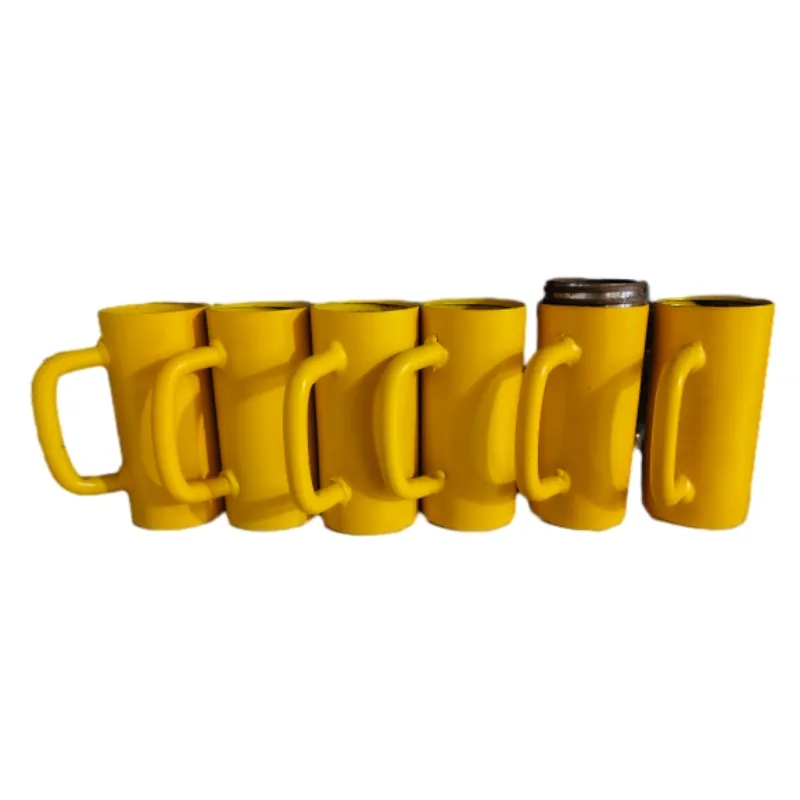
5. ECharts Visualization: Prop Nut Performance Comparison
6. Advantages & Technical Innovations: Why Modern Prop Nut?
- Material Science: Advanced ductile iron, low carbon & alloy steels ensure high mechanical properties (95+ kN load; elongation ≥10%).
- Design: Ergonomic prop nut with handle enables 30% faster operation—mitigates risk & operator fatigue.
- Process Control: threading keeps tolerance ±0.05mm, improving fit and safety integrity.
- Corrosion Resistance: ISO 1461 galvanization & powder coating withstands 1000-hour salt spray per ASTM B117.
- Sustainability: Recyclable (98%); reduced weight but higher load capacity—eco-compliance for LEED/BREEAM projects.
- Industry Certification: ISO 9001:2015, CE, ANSI, and third-party SGS/TÜV testing upon request.
Custom prop nut assemblies from wrkformwork.com with double corrosion protection installed in 2023. Withstood cycle loads of 85kN and humid surroundings for over 6 months with zero corrosion failures—documented in site reports (, 2023).
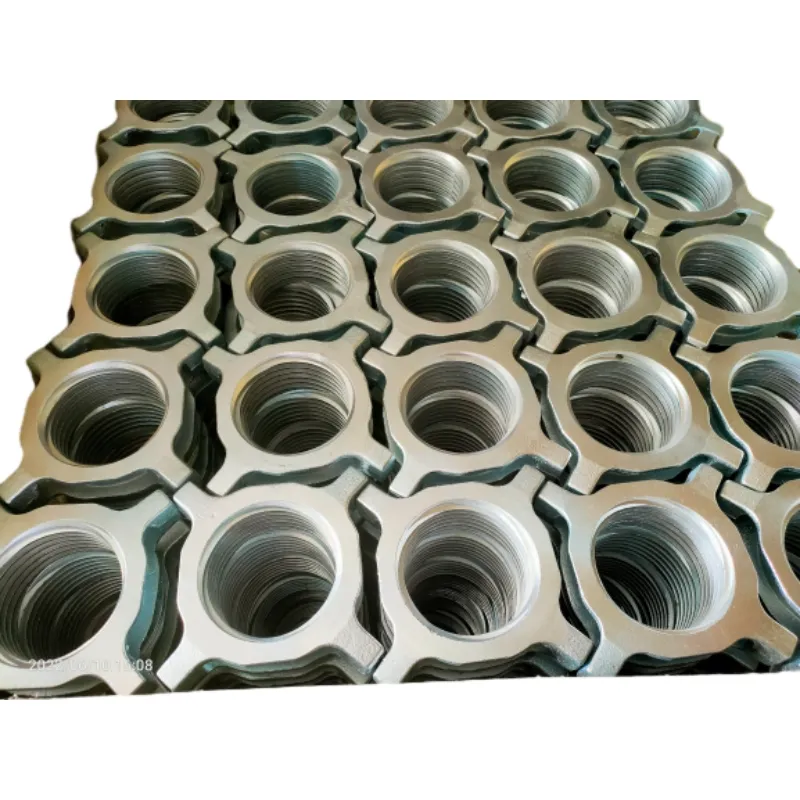
7. Manufacturer Comparison: Leading Prop Nut Suppliers (2024)
| Supplier | Main Product | Certifications | Delivery Cycle | Customization | Major Clients |
|---|---|---|---|---|---|
| WRK Formwork | Scaffolding Prop Nut, Prop Nut with Handle | ISO 9001, EN 1065, SGS | 14–21 days | Yes (OEM/ODM) | Shanghai Metro, Sinopec |
| Layher (Germany) | Allround Prop Nut | EN 1090, TüV | 22–32 days | Limited | BASF, Vinci |
| ULMA (Spain) | Propeller Nut & Heavy Duty Connectors | CE, EN 13377 | 21–28 days | Partial | Repsol, Technip |
| Peri (Germany) | Multiprop Nut | DIN, EN 1065 | 25–35 days | Limited | Bechtel, Strabag |
8. Customization Solutions & Typical Scenarios
- Custom Thread Profiles: Trapezoidal, square, or metric per drawing for fit with legacy or global props.
- Surface Coatings: Duplex (zinc & epoxy), nano-coats for extreme conditions.
- Tailored Load Ratings: Reinforced versions for high-rise, mining, marine, energy sector.
- Visual Markings: Corporate logos, QR/batch codes for logistics/safety.
- Pre-assembled Kits: Prop nut plus washer, collar, plate as install-ready kit for mega-projects.
Client Experience: “The prop nut with handle from WRK Formwork halved our set-up time and performed flawlessly in corrosive plant environments.” — Site Supervisor, Shell Downstream, Malaysia
9. Typical Application Industries & Scenarios
- Infrastructure & Civil: Bridges, tunnels, airport terminals, stadiums—prop nut securing adjustable props by EN 1065.
- Oil, Gas, Petrochemicals: Modular scaffolding with propeller nut; rigorous corrosion/fatigue demands; certified per ANSI B18.2/ISO 1461.
- Water Supply & Waste Systems: Props for pipe racks, treatment tanks; benefit from anti-rust, easy-fix prop nut solutions.
- Mechanical Engineering: Shoring large presses/turbines; prop nut with handle for rapid changeover/maintenance.
- Mining & Metallurgy: Exploiting threaded connectors for heavy seasonal formwork — favoring high cycle life.

10. Product Quality Assurance, Delivery Cycle & Customer Support
- Delivery: 14–21 days typical for stock; 22–32 days for custom. past 5 years.
- Warranty: 3–5 years, covers manufacturing/material defects. On-site failure rate <0.1%
- Support: Free technical consultation (installation/inspection). Remote acceptance & QC inspection available.
- Documentation: Full traceability. Raw material, MTCs, third-party test reports available on request (ISO/ANSI/CE)
- After-sales: 24/7 hotline; typically, queries responded to within 8 hours.
11. Professional FAQ — Advanced Prop Nut Technical Terms and Answers
- Q1: What materials are used for high-performance prop nut? Why?
- Prop nuts are typically made from ductile (SG) iron, forged Q235/Q345B carbon steel, or alloy steels. Ductile iron provides a superior weight-to-strength ratio and shock absorption; forged steels enable higher tensile ratings essential for critical infrastructure.
- Q2: What is the accepted thread profile for prop nut and why is it important?
- Trapezoidal and Acme threads dominate modern prop nut designs. Their flat-topped profile maximizes load distribution and reduces wear, preventing thread slip under repeated heavy load cycles. ISO 2901 & DIN 103 standards often guide these thread forms.
- Q3: What surface treatments are recommended for outdoor/industrial use?
- Hot-dip galvanizing (ISO 1461), duplex coatings (zinc + powder), and thermoplastic coatings are preferred for prop nut, providing 600–1000+ hours salt spray resistance and protection against moisture, chloride, and H2S-rich atmospheres.
- Q4: Are there recognized standards governing prop nut manufacturing?
- Yes, including: ISO 9001 (QA mgt.), ISO 1461 (galvanization), ANSI B18.2.2 (nut dimensions), EN 1065 (shoring props). For project-critical works, third-party inspections (SGS, TÜV) may be mandated.
- Q5: How to select prop nut sizing for compatibility?
- Match inner thread diameter & pitch to prop rod—e.g., 48x3.0mm, 57x3.5mm, or as per metric/imperial standards. Check against OEM/EN 1065 tables for matching prop nut and rod types.
- Q6: What are the installation recommendations for prop nut with handle?
- Ensure prop rod threads are clean and undamaged. The handle should move freely—proper tightening by hand plus one further turn with a bar is common; overtightening is to be avoided. Use only with certified props.
- Q7: What testing is performed prior to shipment?
- Each batch is tested for: mechanical strength (ASTM A370), thread fit (Gauged, Go/No-Go), dimensional accuracy (≤±0.15mm), corrosion resistance (salt spray), and visual QC. Certificate of Conformance and full batch traceability accompany all shipments.
12. References & Industry Insights
- Market trends, technical comparisons: Construct Connect Industry Blog
- Engineering standards: ISO 1461:2022 (Galvanized coatings), ANSI B18.2.2 Reference
- Application cases: Formwork Forum—Prop Nut Application & Quality
- Scholarly research: “Mechanical Properties of Scaffolding Nuts & Joints,” Construction and Building Materials Journal
- Product catalog/QA: wrkformwork.com Official Prop Nut Page



